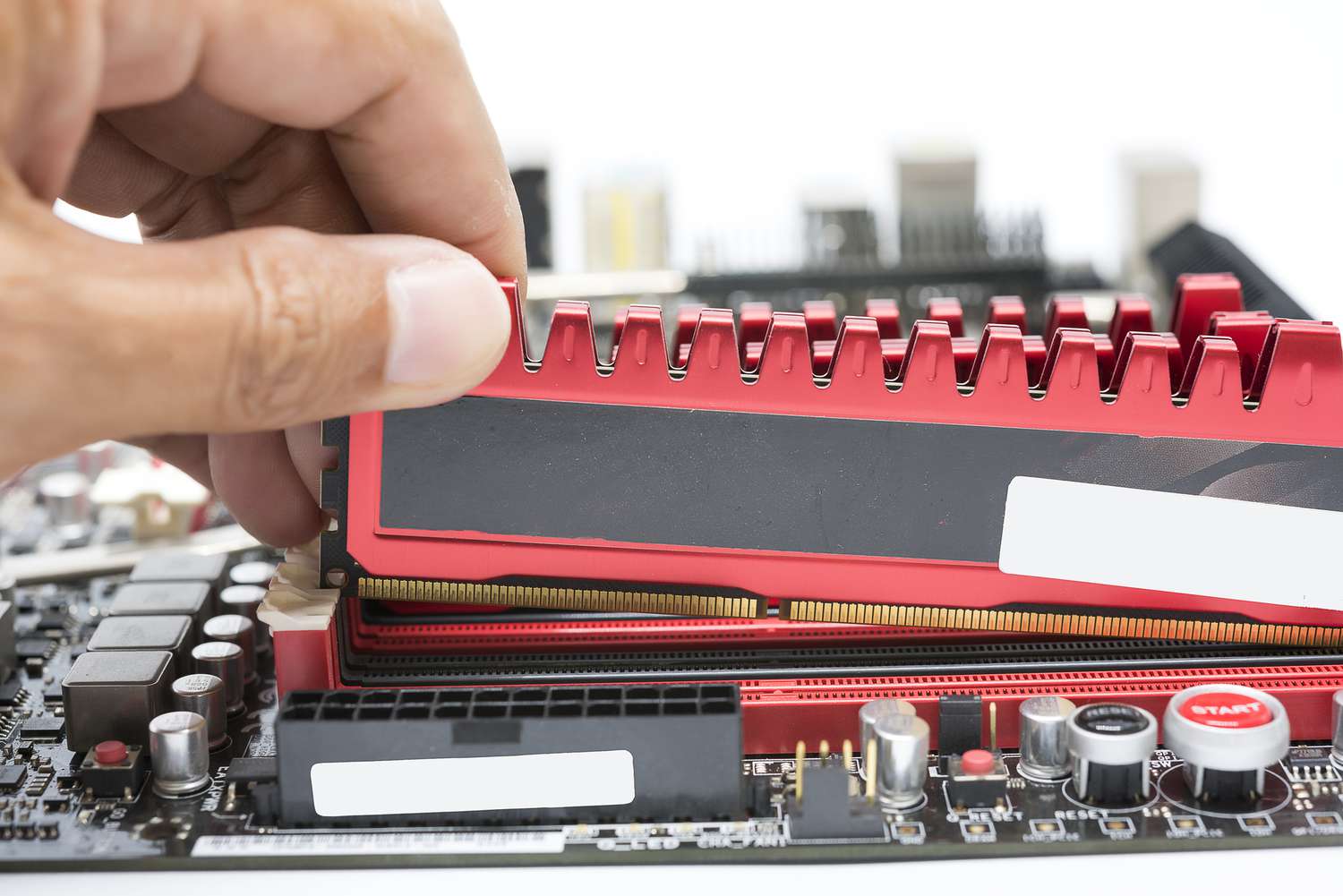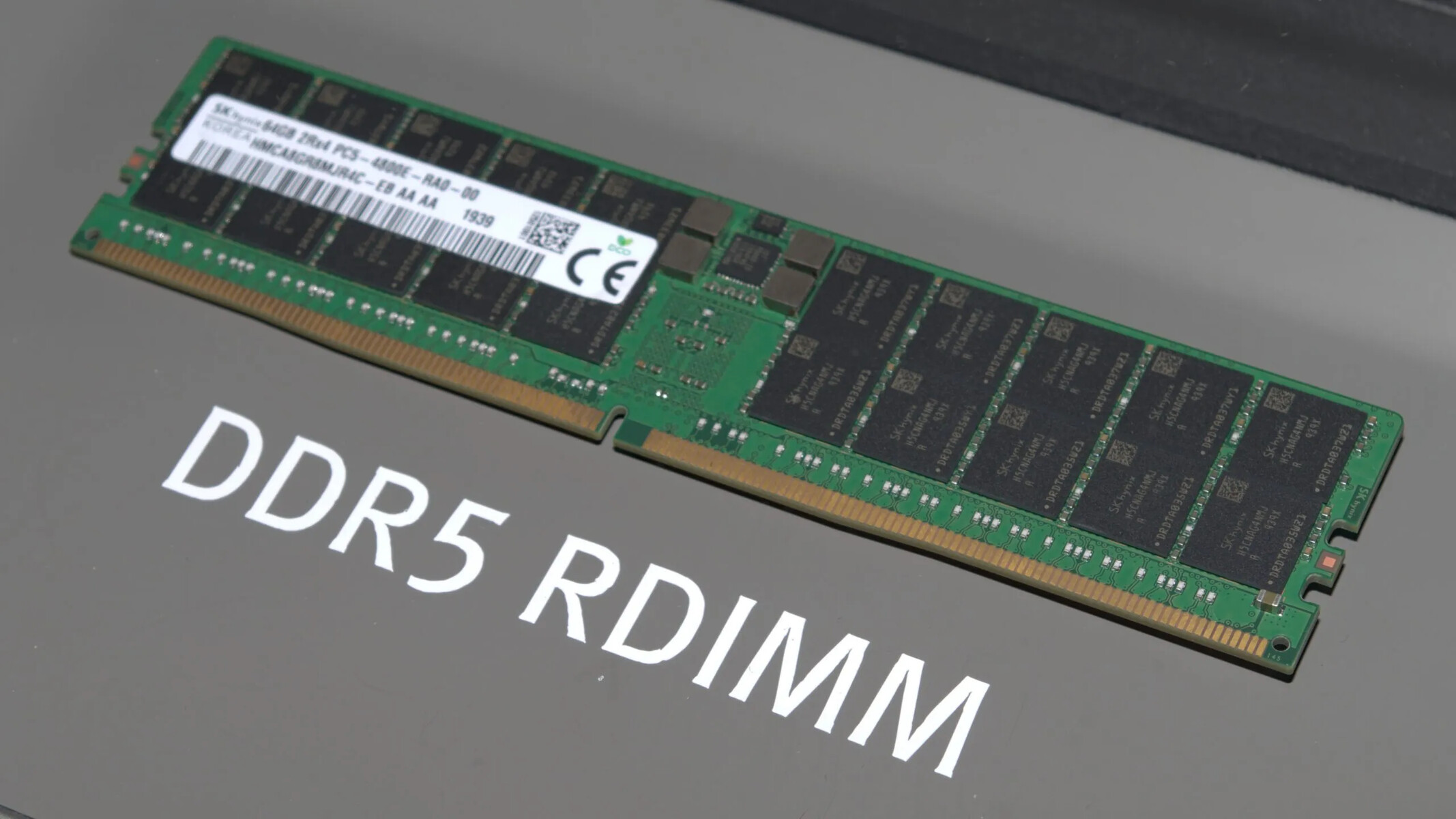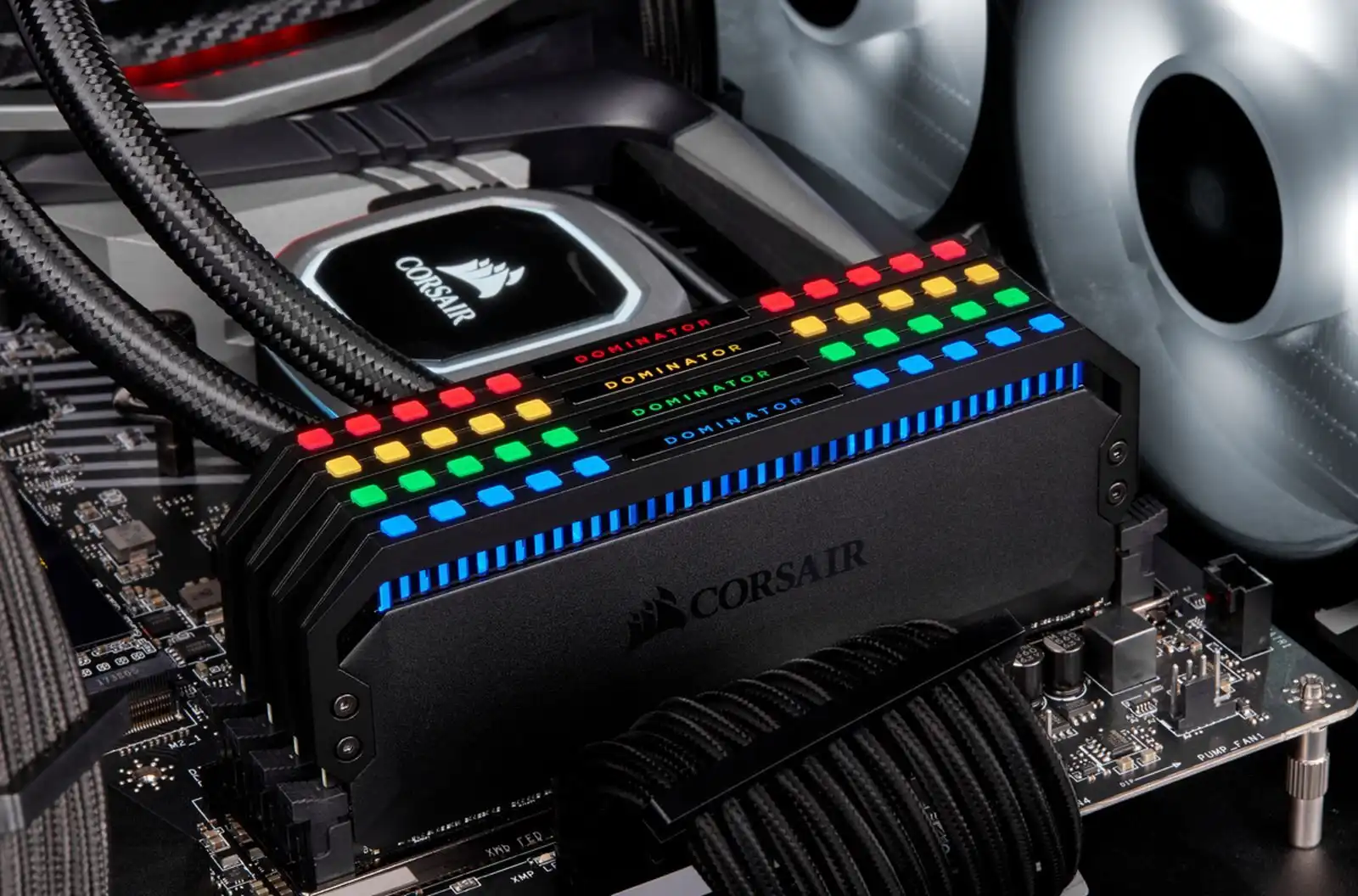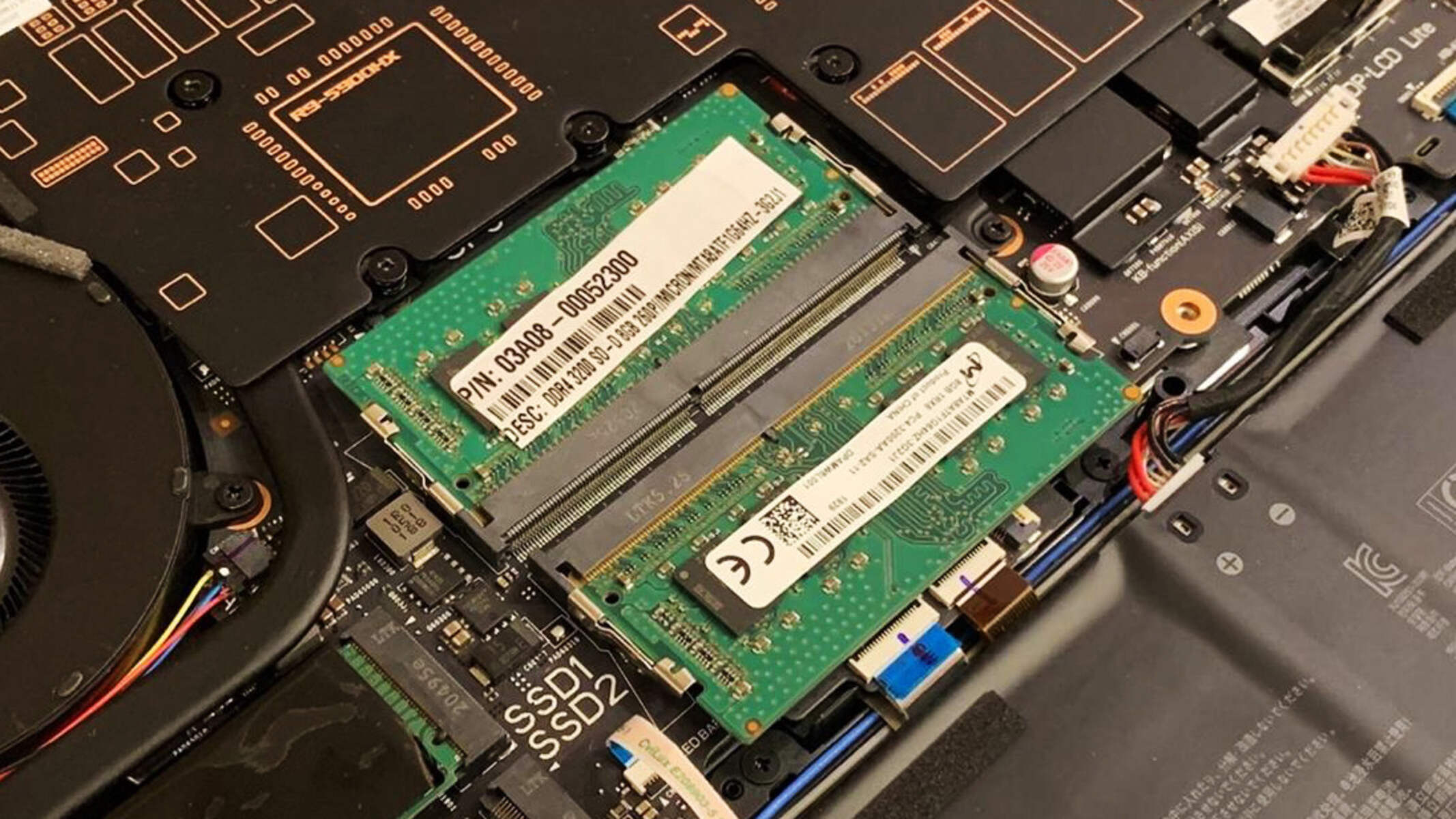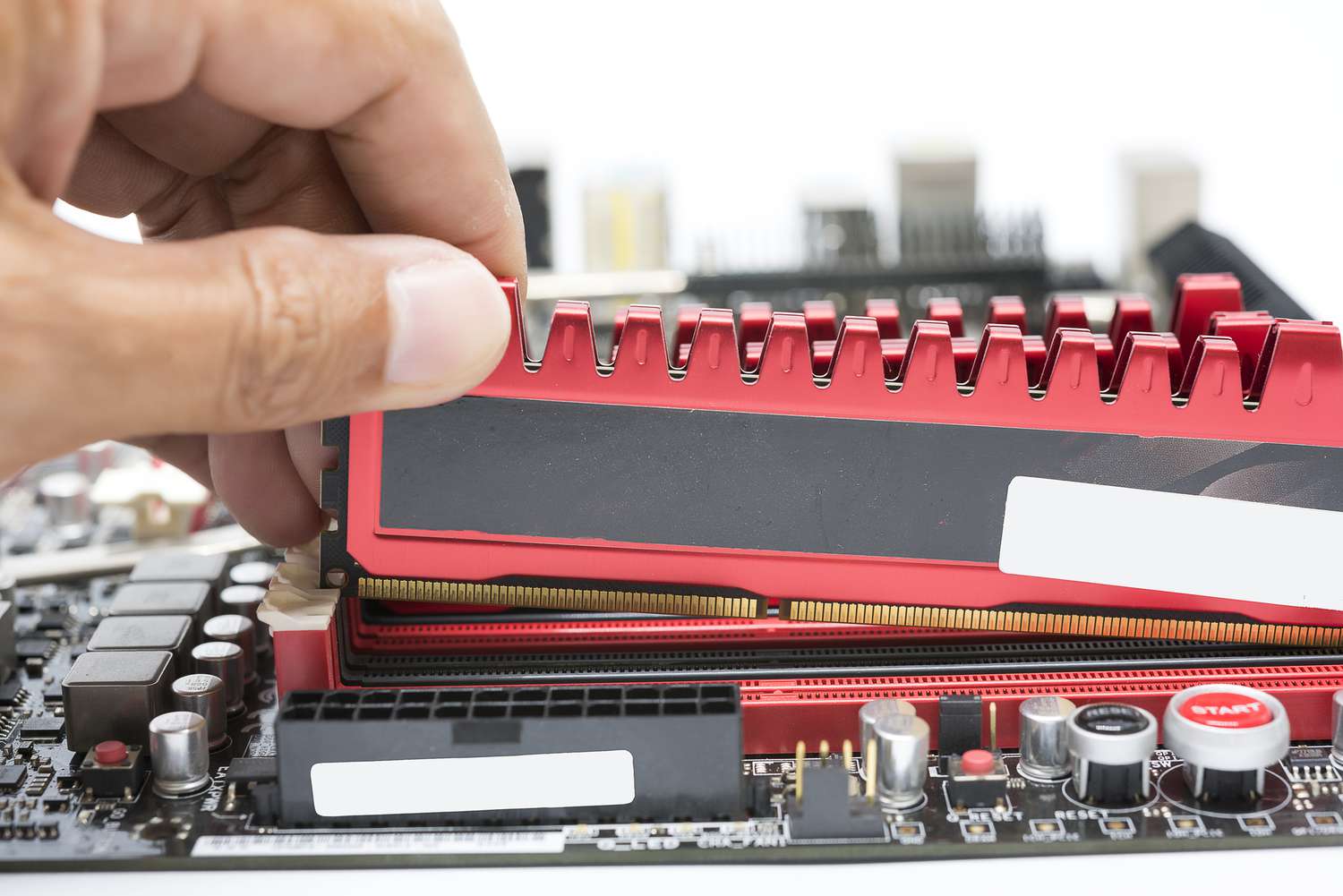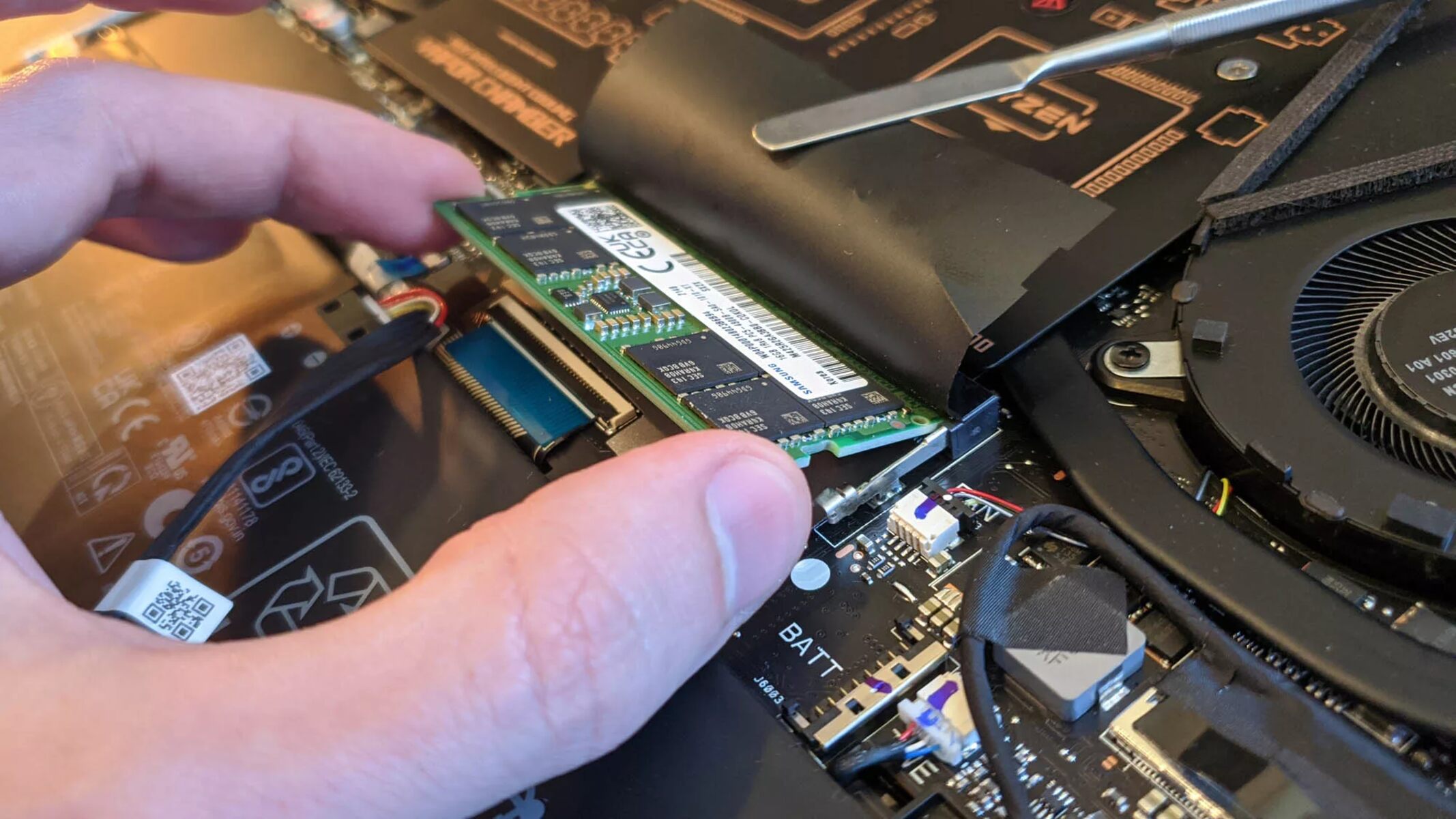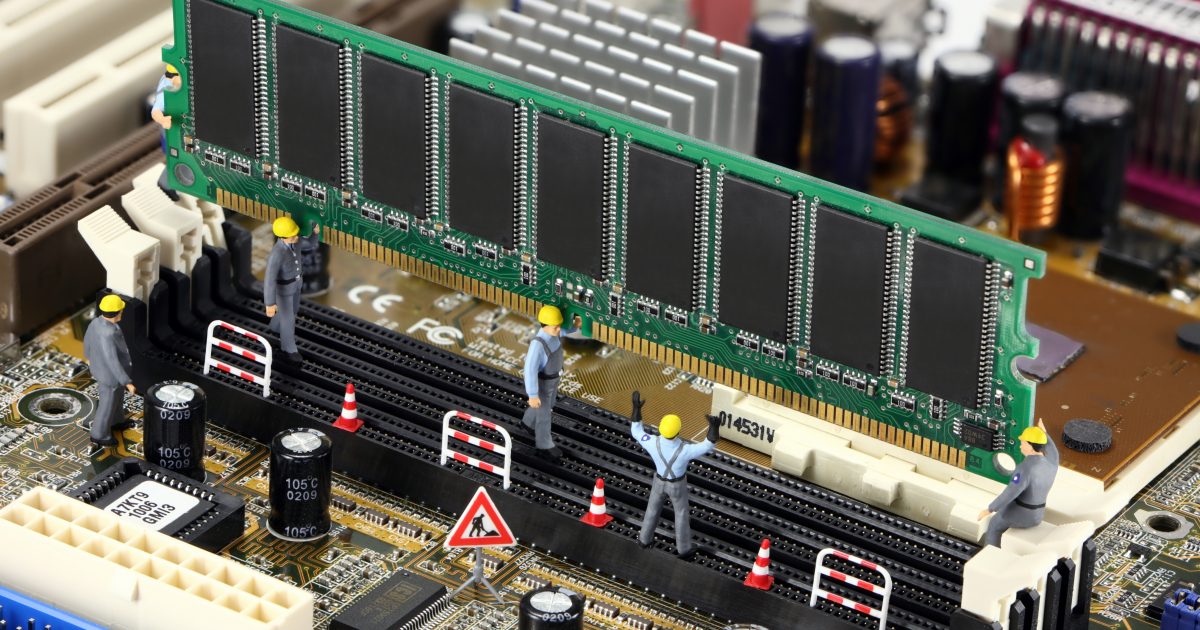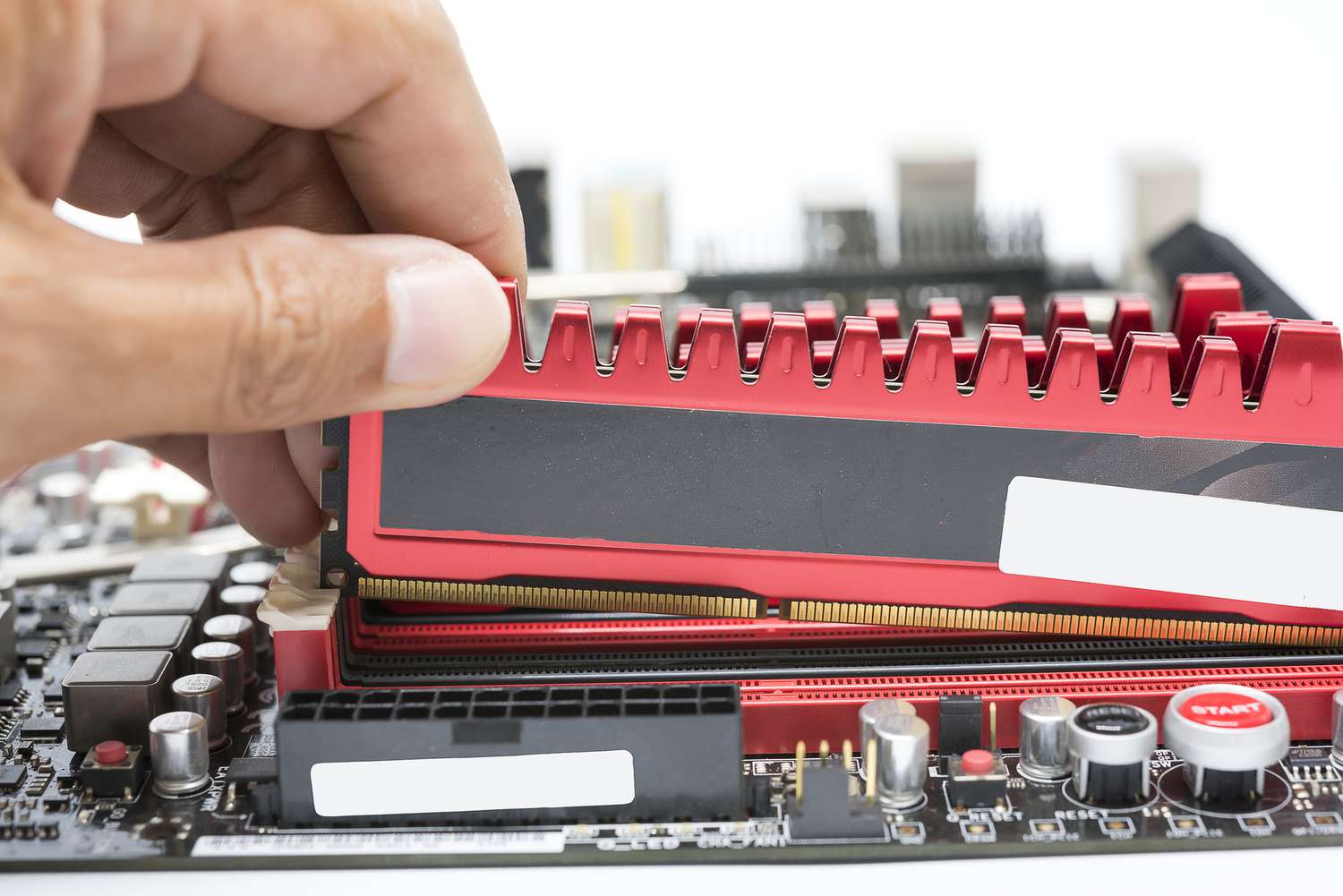What is RAM compatibility?
RAM compatibility refers to the ability of a motherboard to support a specific type of RAM module. It is essential to ensure that the RAM you purchase is compatible with your motherboard to ensure optimal system performance.
When building or upgrading a computer, it is crucial to consider RAM compatibility as it directly affects the stability and efficiency of your system. Installing incompatible RAM can lead to system crashes, data corruption, and even damage to the hardware components.
RAM compatibility is determined by several factors, including the RAM type, speed, capacity, voltage requirement, form factor, and compatibility with overclocking. Let’s dive deeper into each of these factors to understand how they influence RAM compatibility with your motherboard.
The type and speed of RAM are important considerations when determining compatibility. Common types of RAM include DDR3, DDR4, and DDR5. Each type has a different physical design and electrical specifications, so ensure that your motherboard supports the specific type of RAM you intend to use.
The motherboard’s RAM specifications, which are typically listed in the product documentation, will indicate the supported RAM speed. It is important to match the RAM speed to the motherboard’s specifications to achieve optimal performance. Installing RAM with a higher speed than what the motherboard supports may result in downclocking, limiting the RAM’s full potential.
Another vital aspect is the number of RAM slots on the motherboard. Make sure the motherboard has enough slots to accommodate the desired RAM configuration. If you plan to install multiple RAM modules, you need to ensure that there are enough available slots and they support the desired RAM capacity.
RAM capacity refers to the maximum amount of memory that the motherboard can support. It is important to check the maximum RAM capacity allowed by your motherboard to ensure that your system can handle the memory requirements for your specific needs.
Additionally, consider the RAM voltage requirement. The voltage required by the RAM should be compatible with the motherboard’s voltage capabilities. Mismatched voltages can lead to instability or cause damage to the components.
Some motherboards also support overclocking, which allows you to increase the RAM speed beyond the default specifications. To ensure compatibility, check if your motherboard supports overclocking and if it is compatible with the RAM you plan to use.
Finally, confirming compatibility with the RAM form factor is important. Different form factors, such as DIMM or SODIMM, are designed for specific types of motherboards. Ensure that the RAM’s form factor matches the motherboard’s requirements.
To determine RAM compatibility with your motherboard, consult the manufacturer’s website and documentation. They often provide detailed information on compatible RAM modules. Additionally, you can seek advice from computer hardware forums and communities where experts and enthusiasts can share their experiences and provide recommendations.
Understanding RAM compatibility is crucial when selecting and installing RAM in your computer. By considering factors like RAM type, speed, capacity, voltage requirement, form factor, and compatibility with overclocking, you can ensure a stable and efficient system that meets your needs.
Factors to consider when checking RAM compatibility with your motherboard
When it comes to checking RAM compatibility with your motherboard, there are several important factors to consider. Understanding these factors will help ensure that the RAM you choose is compatible with your motherboard, preventing any compatibility issues and maximizing your system’s performance.
Firstly, it’s crucial to check the RAM type and speed. The RAM type, such as DDR3, DDR4, or DDR5, must match the motherboard’s specifications. Additionally, the RAM speed must be within the supported range of the motherboard. Mismatched RAM type or speed can lead to system instability or even failure to boot.
Another important factor is the number of RAM slots on the motherboard. If you plan to install multiple RAM modules, ensure that the motherboard has enough slots and supports the desired configuration. Some motherboards may have limited slots or may require specific configurations for optimal performance.
Consider the supported RAM capacity of the motherboard. This refers to the maximum amount of RAM that the motherboard can handle. It’s crucial to choose RAM modules that do not exceed this capacity to ensure compatibility and avoid potential issues with stability.
One often overlooked consideration is the RAM voltage requirement. The voltage required by the RAM module must be supported by the motherboard. Mismatched voltages can result in damage to the RAM or motherboard, or they may prevent the system from functioning properly.
Additionally, it’s important to consider the motherboard’s supported RAM frequency. While some motherboards support a wide range of frequencies, others have limitations. Ensure that the RAM frequency you choose falls within the supported range of your motherboard to ensure optimal performance.
If you plan on overclocking your RAM, make sure that your motherboard supports this feature. Overclocking RAM can provide a performance boost, but not all motherboards allow for this. Ensure that your motherboard has the necessary settings and capabilities to handle overclocked RAM.
Lastly, check for compatibility with the RAM form factor. Different motherboards support different form factors, such as DIMM or SODIMM. Ensure that the RAM module you choose matches the required form factor for your motherboard.
When checking RAM compatibility, manufacturers’ websites and documentation can be valuable resources. They often provide a list of compatible RAM modules for their motherboards, including specific models and configurations. Additionally, seeking advice from computer hardware forums or communities can provide insights from experienced users who have encountered similar compatibility issues.
By considering factors such as RAM type, speed, capacity, voltage requirement, form factor, and overclocking compatibility, you can ensure that your chosen RAM is compatible with your motherboard. Doing so will result in a stable and efficient system that meets your performance requirements.
Checking the RAM type and speed
When checking RAM compatibility with your motherboard, the first step is to confirm the RAM type and speed. This information plays a crucial role in determining compatibility and ensuring optimal performance.
The RAM type refers to the generation or version of the RAM module, such as DDR3, DDR4, or DDR5. Each RAM type has different physical and electrical specifications. It is important to ensure that the RAM type you choose matches the supported RAM type listed in your motherboard’s documentation or specifications.
Next, consider the RAM speed, also known as the frequency or clock speed. RAM speed is measured in MHz and determines how quickly data can be read from or written to the RAM module. Higher RAM speeds generally result in better overall system performance.
Checking the RAM speed compatibility involves comparing the supported RAM speed of your motherboard with the RAM module you want to use. The motherboard’s specifications or documentation will indicate the supported RAM speed. It is important to choose a RAM module with a speed that falls within the supported range or matches the recommended speed listed by the motherboard manufacturer.
Installing RAM modules with speeds that exceed the motherboard’s supported range can lead to compatibility issues. In such cases, the motherboard may automatically downclock the RAM to match its maximum supported speed. This can result in a performance downgrade and underutilization of the RAM’s capabilities.
It’s worth noting that using RAM modules with speeds lower than the supported range can be compatible, but it may restrict the overall performance potential of the system. It’s recommended to use RAM modules with speeds that are at least within the supported range or closer to the maximum supported speed for optimal performance.
Furthermore, it’s important to consider the implications of mixing RAM modules with different speeds. Certain motherboards can handle mixed RAM speeds, but it’s generally recommended to use RAM modules with the same speed to avoid potential issues. Mixing RAM speeds may result in the system downclocking all RAM modules to the speed of the slowest module, limiting the overall performance.
In summary, checking the RAM type and speed is an important aspect of determining RAM compatibility with your motherboard. Ensure that the RAM type matches the supported RAM type and select RAM modules with speeds that fall within the supported range or match the recommended speed of your motherboard. This will help ensure optimal performance and compatibility for your system.
Understanding the motherboard’s RAM specifications
When checking RAM compatibility with your motherboard, it is crucial to understand and interpret the RAM specifications provided by the motherboard manufacturer. These specifications outline the supported RAM configurations and can help you choose the appropriate RAM modules for your system.
One important aspect of the motherboard’s RAM specifications is the maximum supported RAM capacity. This indicates the maximum amount of RAM that can be installed on the motherboard. It is essential to ensure that the RAM capacity you choose does not exceed the motherboard’s maximum limit to avoid compatibility issues. Exceeding the maximum supported RAM capacity may result in the system failing to recognize or utilize the additional RAM modules.
Another vital specification to consider is the number of RAM slots on the motherboard. This determines the maximum number of RAM modules that can be installed. Some motherboards have a limited number of RAM slots, while others offer additional slots for expandability. Ensure that you have enough RAM slots to accommodate the desired RAM configuration.
The motherboard’s RAM specifications may also include information about the supported RAM form factor. Common form factors for desktop motherboards are DIMM (Dual Inline Memory Module) and SO-DIMM (Small Outline Dual Inline Memory Module). Laptop or small form factor systems often use SO-DIMMs. Ensure that the RAM modules you choose match the form factor specified by the motherboard.
Additionally, some motherboards may provide information about the supported RAM channel configuration. RAM channels determine how the system accesses and processes data from the RAM modules. Common configurations include single-channel, dual-channel, or quad-channel. It is recommended to use RAM modules in a configuration that matches the supported RAM channels of the motherboard to maximize memory performance.
It is worth noting that some motherboards may have specific memory slot assignments or requirements. For example, they may require certain slots to be populated first before others. Consult the motherboard’s documentation or specifications to ensure that you follow any specific guidelines for proper RAM installation.
Lastly, the motherboard’s RAM specifications may outline any additional features, such as support for ECC (Error Correcting Code) or non-ECC RAM. ECC RAM is commonly used in servers or mission-critical systems as it detects and corrects memory errors to ensure data integrity. Non-ECC RAM, on the other hand, is more common in consumer-grade systems and does not include error correction capabilities.
In summary, understanding the motherboard’s RAM specifications is crucial when checking RAM compatibility. Consider the maximum supported RAM capacity, the number of RAM slots, the supported form factor, channel configuration, and any additional features required or supported by the motherboard. By carefully reviewing these specifications, you can select the appropriate RAM modules that will be compatible with your motherboard and maximize system performance.
Checking the number of RAM slots on the motherboard
When checking RAM compatibility with your motherboard, one essential factor to consider is the number of RAM slots available on the motherboard. The number of RAM slots determines the maximum number of RAM modules that can be installed, impacting the overall capacity and flexibility of your system’s memory.
To determine the number of RAM slots on your motherboard, you can refer to the motherboard’s specifications or documentation. Most motherboards typically have two to four RAM slots, although some high-end models may offer more. It is important to ensure that the motherboard has enough slots to accommodate your desired RAM configuration.
If you plan to install a single RAM module, the number of RAM slots may not be a significant concern. However, if you intend to utilize multiple RAM modules for higher memory capacity or to take advantage of dual-channel or quad-channel memory configurations, the number of RAM slots becomes crucial.
For example, if you plan to use dual-channel memory, it is recommended to install RAM modules in pairs to take advantage of the increased memory bandwidth. In this case, a motherboard with four RAM slots would allow you to populate two slots on each channel, enabling dual-channel memory access. On the other hand, a motherboard with only two RAM slots would limit you to a single-channel memory configuration.
It’s important to note that some motherboards may have specific slot configurations or limitations. They may require certain slots to be populated first before others, or they may have restrictions on the number of modules that can be used in certain configurations. Refer to the motherboard’s documentation to determine if there are any specific guidelines or requirements for RAM slot usage.
Another consideration is future expandability. If you anticipate the need for more memory in the future, it can be beneficial to choose a motherboard with additional RAM slots. This allows you to easily upgrade your system’s memory capacity without having to replace existing modules.
Additionally, some motherboards may have limitations on the maximum memory capacity supported per slot. For example, a motherboard may support a total of 32GB of RAM but only allow a maximum of 8GB per slot. In such cases, be sure to check the specifications to ensure that your desired RAM modules are within the supported capacity per slot.
By checking the number of RAM slots on your motherboard, you can ensure that you have enough slots to accommodate your desired RAM configuration and take advantage of memory configurations such as dual-channel or quad-channel memory. This will allow you to optimize memory performance and ensure compatibility for your system’s memory needs.
Identifying the supported RAM capacity
When checking RAM compatibility with your motherboard, it is crucial to identify the supported RAM capacity. The supported RAM capacity refers to the maximum amount of RAM that the motherboard can handle, and it plays a vital role in determining the overall memory capabilities of your system.
To identify the supported RAM capacity of your motherboard, you can refer to the motherboard’s specifications or documentation. This information is usually provided by the manufacturer and can typically be found on their website or in the product manual.
The supported RAM capacity is often expressed in terms of total memory capacity, such as 32GB, 64GB, or 128GB. It represents the maximum amount of RAM that the motherboard can recognize and utilize effectively.
When selecting RAM modules, it is important to ensure that the total capacity of the RAM modules does not exceed the supported RAM capacity of the motherboard. For example, if your motherboard supports a maximum of 64GB of RAM, installing 4x16GB modules or 2x32GB modules would be within the supported capacity. However, installing 4x32GB modules would exceed the supported capacity and may result in compatibility issues or the motherboard not recognizing the excess memory.
It’s also worth noting that the supported RAM capacity may differ based on the type of RAM modules being used. For example, some motherboards may support a higher capacity when using larger modules, such as 16GB or 32GB, compared to smaller modules, such as 4GB or 8GB. Therefore, it is essential to refer to the specifications or documentation to determine the supported capacity for the specific RAM module sizes you plan to use.
Another consideration is the number of RAM slots on the motherboard. The total supported RAM capacity may vary depending on the number of slots populated. For example, a motherboard may support up to 64GB of RAM with all four slots populated, but the capacity may be reduced if fewer slots are used. It’s important to check the specifications to understand how the supported RAM capacity may be affected by the number of populated slots.
Keep in mind that the supported RAM capacity not only affects the total amount of memory your system can use but also impacts the performance and capabilities of certain applications or processes. Applications that require a large amount of memory, such as video editing software or virtual machines, may benefit from a higher supported RAM capacity.
By identifying the supported RAM capacity, you can select the appropriate RAM modules that fit within the supported limits of your motherboard. This ensures compatibility, prevents any potential issues with memory recognition, and allows you to optimize your system’s memory capacity to meet your specific needs.
Checking the RAM voltage requirement
When checking RAM compatibility with your motherboard, it is important to consider the RAM voltage requirement. RAM modules operate at specific voltages, and ensuring that the RAM voltage requirement matches the capabilities of your motherboard is crucial for compatibility and stability.
To check the RAM voltage requirement, you can refer to the RAM module specifications provided by the manufacturer. The RAM voltage requirement is typically listed in the specifications or on the product label.
It is essential to ensure that the RAM voltage requirement matches the voltage capabilities of your motherboard. Most motherboards support a range of RAM voltages, such as 1.2V, 1.35V, or 1.5V. Some high-performance RAM modules may require higher voltages, such as 1.65V.
If the RAM module requires a higher voltage than what the motherboard supports, it can lead to compatibility issues or even damage to the RAM modules or motherboard. Conversely, using RAM modules that require a lower voltage than what the motherboard supports may result in underperformance or instability.
It is worth noting that some motherboards automatically adjust the RAM voltage based on the detected RAM module requirements. This feature is often called “Auto” or “Auto Voltage” and allows the motherboard to adjust the RAM voltage to match the specific module’s requirement. However, it is still important to verify that the RAM voltage range falls within the supported limits of the motherboard.
Additionally, some motherboards provide a feature called XMP (Extreme Memory Profile) or DOCP (DRAM Overclocking Profile) that allows you to select preconfigured profiles for your RAM modules. These profiles include specific voltage settings optimized for the RAM module’s performance. When using XMP or DOCP, ensure that the RAM voltage requirement is within the supported range of your motherboard.
Checking the RAM voltage requirement is crucial to avoid compatibility issues and ensure the optimal performance and stability of your system. Make sure that the RAM module’s voltage requirement matches the voltage capabilities of your motherboard to ensure proper functioning and prevent any potential damage to your components.
If you are unsure about the RAM voltage requirement or compatibility, it is recommended to consult the motherboard manufacturer’s documentation or their website for a list of compatible RAM modules or seek advice from computer hardware forums or communities for further assistance.
By carefully checking and confirming the RAM voltage requirement, you can ensure compatibility and peace of mind when selecting RAM modules for your motherboard.
Considering the motherboard’s supported RAM frequency
When checking RAM compatibility with your motherboard, it’s important to consider the supported RAM frequency. The RAM frequency, also known as the RAM clock speed, plays a significant role in determining the performance and compatibility of your system’s memory.
The RAM frequency refers to the speed at which data can be read from or written to the RAM module, and it is measured in megahertz (MHz). Higher RAM frequencies generally result in better overall system performance.
To determine the motherboard’s supported RAM frequency, you can refer to the motherboard’s specifications or documentation. These resources typically indicate the range of supported RAM frequencies.
When selecting RAM modules, it’s crucial to ensure that the chosen RAM modules fall within the supported frequency range of the motherboard. Using RAM modules with frequencies higher or lower than the supported range can lead to compatibility issues or suboptimal performance.
It’s worth noting that some motherboards may support overclocking, which allows you to exceed the default RAM frequency to achieve higher performance. In such cases, the motherboard specifications may indicate both the stock (default) frequency and the overclocking frequency range.
If you plan to overclock your RAM, make sure that your motherboard supports this feature and understand the potential risks associated with overclocking. Overclocking may require additional cooling solutions and can void warranties or lead to instability if not done properly.
When selecting RAM modules, you have the option to choose modules with frequencies equal to or lower than the supported frequency. For example, if your motherboard supports a maximum RAM frequency of 3200MHz, you can install RAM modules with speeds of 3200MHz or lower.
Using RAM modules with frequencies lower than the maximum supported frequency may still provide adequate performance for many applications and tasks. However, it’s generally recommended to choose RAM modules with frequencies as close to the maximum supported frequency as possible to fully utilize the motherboard’s capabilities.
It’s also important to consider that the motherboard’s supported RAM frequency can be influenced by other factors, such as the CPU’s memory controller capabilities. Ensure compatibility not only with the motherboard but also with other components in your system to achieve optimal performance.
By considering the motherboard’s supported RAM frequency, you can ensure that the chosen RAM modules are compatible and capable of delivering the desired performance for your system. Matching the RAM frequency to the motherboard’s supported range or considering overclocking capabilities will help maximize the memory performance and efficiency of your system.
Checking for compatibility with overclocking
When checking RAM compatibility with your motherboard, it’s important to consider compatibility with overclocking. Overclocking allows you to increase the speed or frequency of your RAM modules beyond their default settings, enabling higher performance. However, not all motherboards support overclocking, so it’s crucial to determine compatibility before attempting to overclock your RAM.
To check for compatibility with overclocking, you can consult the motherboard’s specifications or documentation. Look for features such as XMP (Extreme Memory Profile) or DOCP (DRAM Overclocking Profile), as these can indicate support for overclocking.
Motherboards that support overclocking often have BIOS settings that allow you to adjust the RAM frequency, timings, and voltages manually or apply preconfigured profiles to achieve higher performance. These settings give you the flexibility to push the limits of your RAM modules and take advantage of their potential.
It’s important to note that overclocking can pose certain risks and considerations. Pushing the RAM modules beyond their specified limits can lead to instability, data corruption, or even hardware damage. It may also impose greater stress on the components, requiring additional cooling solutions to maintain stability.
Before attempting to overclock your RAM, make sure you understand the risks involved and have adequate knowledge of the overclocking process. Refer to the motherboard’s documentation or seek guidance from reputable sources, such as hardware forums or communities, to ensure a safe and successful overclocking experience.
It’s also important to consider the capabilities of your RAM modules when overclocking. Not all RAM modules are created equal, and some may have higher overclocking potential than others. Modules that are specifically designed for overclocking, such as those labeled as “Extreme Edition” or “Overclocking Series,” may offer better stability and higher overclocking headroom.
Furthermore, when overclocking your RAM, it’s essential to ensure compatibility with other components, such as the CPU and cooling system. Overclocking the RAM can also affect other system components, so it’s crucial to ensure that your CPU’s memory controller supports the desired overclocking frequencies and that your cooling system is adequate to dissipate the increased heat generated.
Finally, always monitor your system while overclocking to ensure stability. Run stability tests, such as running memory-intensive applications or stress-testing utilities, to confirm that the overclocked RAM is functioning reliably. If you encounter stability issues, such as crashes or system freezes, it may be necessary to adjust the overclocking settings or revert to default settings for optimal stability.
In summary, when checking RAM compatibility with your motherboard, it’s important to consider compatibility with overclocking. Check the motherboard’s specifications for features like XMP or DOCP that indicate support for overclocking. Understand the risks involved, ensure compatibility with other components, and monitor system stability while overclocking to maximize performance without compromising system stability.
Confirming compatibility with the RAM form factor
When checking RAM compatibility with your motherboard, it is vital to confirm compatibility with the RAM form factor. The form factor refers to the physical design and dimensions of the RAM module, which determines whether it will fit and work properly in the RAM slots of your motherboard.
To confirm compatibility with the RAM form factor, you can refer to the specifications or documentation provided by the motherboard manufacturer. The motherboard specifications typically indicate the supported RAM form factors, such as DIMM (Dual Inline Memory Module) or SO-DIMM (Small Outline Dual Inline Memory Module).
Desktop motherboards typically use DIMM slots, which are longer and wider than SO-DIMM slots. These DIMM slots are typically found in larger form factor motherboards like ATX or micro-ATX. On the other hand, SO-DIMM slots are commonly found in laptops, small form factor systems, or specialized motherboards designed for compact builds.
Ensure that the RAM module you choose matches the specific form factor supported by your motherboard. Attempting to install a RAM module with an incompatible form factor may physically not fit into the RAM slots or result in damage to the module or motherboard.
It’s worth noting that the RAM form factor also determines the number of pins on the module. For example, a DDR4 DIMM module typically has 288 pins, while a DDR4 SO-DIMM module typically has 260 pins. This distinction in pins ensures that the RAM modules are not interchangeable between different form factors.
It’s essential to avoid any forceful insertion or modification of the RAM module to fit into an incompatible slot or form factor. Doing so can cause irreparable damage to both the RAM module and the motherboard.
If you are unsure about the RAM form factor compatibility, consult the motherboard manufacturer’s documentation or their website for a list of supported RAM form factors and recommended models.
Furthermore, it’s worth considering future expandability when confirming compatibility with the RAM form factor. If you anticipate upgrading or adding more RAM in the future, ensure that your motherboard offers enough RAM slots and supports the desired form factor to accommodate the potential expansion.
By confirming compatibility with the RAM form factor, you can ensure that the selected RAM module fits properly into the motherboard’s RAM slots and is compatible with the physical design of your system. This ensures proper functioning, prevents potential damage, and allows for smooth upgrades or expansions in the future.
Using motherboard manufacturer’s website and documentation
When checking RAM compatibility with your motherboard, one valuable resource is the manufacturer’s website and documentation. The motherboard manufacturer provides detailed information that can help you determine the specific RAM modules that are compatible with your motherboard.
Start by visiting the motherboard manufacturer’s website and navigating to the support or specifications section. Here, you can usually find a list of supported RAM modules, including the specific models and configurations that have been tested and verified for compatibility with the motherboard.
The manufacturer’s website often provides comprehensive documentation for each motherboard model, including user manuals, specification sheets, or compatibility lists. These documents will outline the supported RAM types, speeds, capacities, and other important details necessary for choosing compatible RAM.
Look for the motherboard’s technical specifications, as these will list the specific RAM standards supported, such as DDR3, DDR4, or DDR5. They will also indicate the maximum supported RAM capacity, the number of RAM slots available, and any specific requirements regarding voltage or frequency.
The manufacturer’s documentation may also provide information on recommended RAM configurations or guidelines for optimal performance. Following these recommendations can help ensure that you select the appropriate RAM modules for your system.
Furthermore, the motherboard manufacturer’s website may have a support forum or community where you can seek additional information and guidance from other users who have similar hardware setups. Participating in these forums can provide insights, firsthand experiences, and recommendations specific to your motherboard model and RAM compatibility.
When using the manufacturer’s website and documentation, it’s important to cross-reference information and confirm compatibility for your specific motherboard model. Motherboards within the same series or generation may have slight variations in supported RAM configurations, so be sure to validate compatibility with your exact motherboard version.
If you have any doubts or questions about RAM compatibility, contacting the manufacturer’s customer support can provide direct assistance. They can help clarify any concerns, answer specific queries, or guide you in selecting the appropriate RAM for your motherboard.
By utilizing the resources available on the motherboard manufacturer’s website and exploring the provided documentation, you can access accurate and reliable information to ensure RAM compatibility and make informed decisions when selecting RAM modules for your system.
Seeking expert advice or consulting forums and communities
When checking RAM compatibility with your motherboard, seeking expert advice or consulting forums and communities can be a valuable step to gather insights and recommendations from experienced users and professionals in the field.
Specialized computer hardware forums and communities provide platforms where individuals with expertise in computer hardware and enthusiasts with similar experiences can share their knowledge and offer guidance. Participating in these forums allows you to tap into a wealth of collective knowledge and gain valuable insights into RAM compatibility with specific motherboard models.
By posting questions or browsing through existing discussions, you can benefit from the experiences and expertise of others who have encountered similar compatibility issues and successfully resolved them. They may offer specific recommendations for RAM modules or provide feedback on compatibility, overclocking capabilities, or performance optimizations.
When seeking advice on forums or communities, provide relevant details about your motherboard model and the specific RAM modules you are considering. Including this information will help others provide accurate and tailored responses to your compatibility queries.
It’s important to note that while forums and communities can be an excellent resource, it’s essential to verify the information and consider multiple perspectives. Cross-referencing opinions and recommendations with the motherboard manufacturer’s documentation can help ensure accuracy and compatibility.
Another avenue for seeking expert advice is reaching out to professional computer technicians or consultants who specialize in hardware compatibility and system builds. These professionals possess extensive knowledge and experience in assembling and optimizing computer systems. They can provide personalized guidance based on your specific requirements, budget, and compatibility concerns.
As with forums and communities, it’s important to provide relevant details and specifications when consulting with experts to receive accurate and relevant advice.
When approaching experts or forums for advice, it’s beneficial to come prepared with a list of questions and specific concerns you have regarding RAM compatibility with your motherboard. This ensures that you maximize the value of the advice received and address any potential challenges or uncertainties.
Remember that seeking expert advice or consulting forums and communities should be viewed as complementary to other resources, such as the motherboard manufacturer’s website and documentation. By combining multiple sources of information and viewpoints, you can make more informed decisions and enhance your understanding of RAM compatibility with your specific motherboard.
Overall, seeking expert advice or consulting forums and communities can provide valuable insights, recommendations, and real-world experiences to help you navigate and resolve any RAM compatibility concerns you may have with your motherboard.
Summary
Checking RAM compatibility with your motherboard is crucial to ensure optimal performance and stability for your computer system. By considering the various factors outlined in this article, you can determine the compatibility between your motherboard and RAM modules before making a purchase or upgrade decision.
Start by understanding the RAM compatibility factors, such as the RAM type and speed, which should match the motherboard’s specifications. Checking the number of RAM slots on the motherboard ensures that you have enough slots to accommodate your desired RAM configuration.
Identifying the supported RAM capacity helps determine the maximum amount of RAM your motherboard can handle, while checking the RAM voltage requirement ensures compatibility and prevents damage to components. Confirming compatibility with the RAM form factor ensures that the physical design of the RAM modules aligns with the motherboard’s specifications.
Considering the motherboard’s supported RAM frequency allows you to select RAM modules that maximize performance, while checking for compatibility with overclocking ensures that your motherboard supports the desired overclocking frequency for enhanced performance.
Lastly, leveraging the manufacturer’s website and documentation, as well as seeking expert advice or consulting forums and communities, can provide additional guidance and insights to ensure RAM compatibility with your specific motherboard model.
By following these steps and gathering the necessary information, you can confidently select RAM modules that are compatible with your motherboard, providing you with a stable and efficient system that meets your performance needs. Take the time to thoroughly research and verify compatibility to avoid any potential issues and make the most out of your RAM and motherboard combination.







